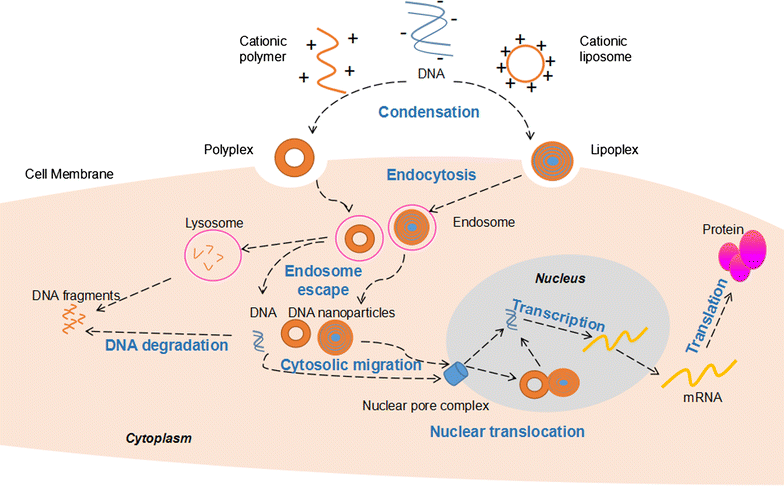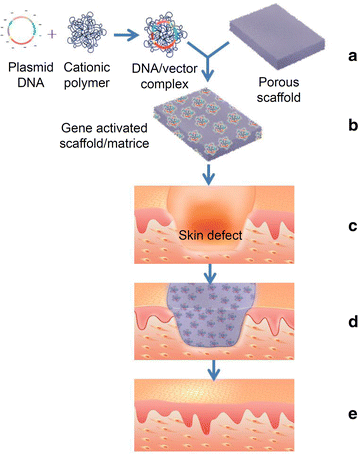Non-viral gene delivery systems for tissue repair and regeneration
- PMID: 29448962
- PMCID: PMC5815227
- DOI: 10.1186/s12967-018-1402-1
Non-viral gene delivery systems for tissue repair and regeneration
Abstract
Critical tissue defects frequently result from trauma, burns, chronic wounds and/or surgery. The ideal treatment for such tissue loss is autografting, but donor sites are often limited. Tissue engineering (TE) is an inspiring alternative for tissue repair and regeneration (TRR). One of the current state-of-the-art methods for TRR is gene therapy. Non-viral gene delivery systems (nVGDS) have great potential for TE and have several advantages over viral delivery including lower immunogenicity and toxicity, better cell specificity, better modifiability, and higher productivity. However, there is no ideal nVGDS for TRR, hence, there is widespread research to improve their properties. This review introduces the basic principles and key aspects of commonly-used nVGDSs. We focus on recent advances in their applications, current challenges, and future directions.
Keywords: Gene therapy; Non-viral vector; Tissue engineering.
Figures


References
Publication types
MeSH terms
LinkOut - more resources
Full Text Sources
Other Literature Sources

